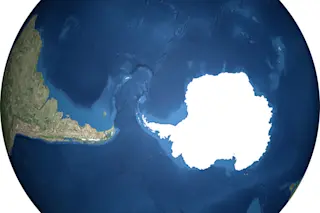There’s still a window to alter course on climate change, but it’s small. And what we decide to do in the next decade could make all the difference. That’s the sobering takeaway from an assessment of Antarctica published in Nature in June, claiming to offer the most complete picture yet of the continent’s ice sheets. Meanwhile, another international team of scientists found that Antarctica has lost 3 trillion tons of ice since 1992, causing a roughly 8-millimeter rise in sea level, or about a third of an inch. If we continue our current carbon emissions, Earth could eventually see a 150-foot rise in sea level from Antarctica’s remaining ice when it melts. The findings come as climate scientists prepare to deploy new instruments on land, air, sea and space to poke and prod Earth’s climate system in the years ahead.
When the Larsen C Ice Shelf calved in 2017, it ...















